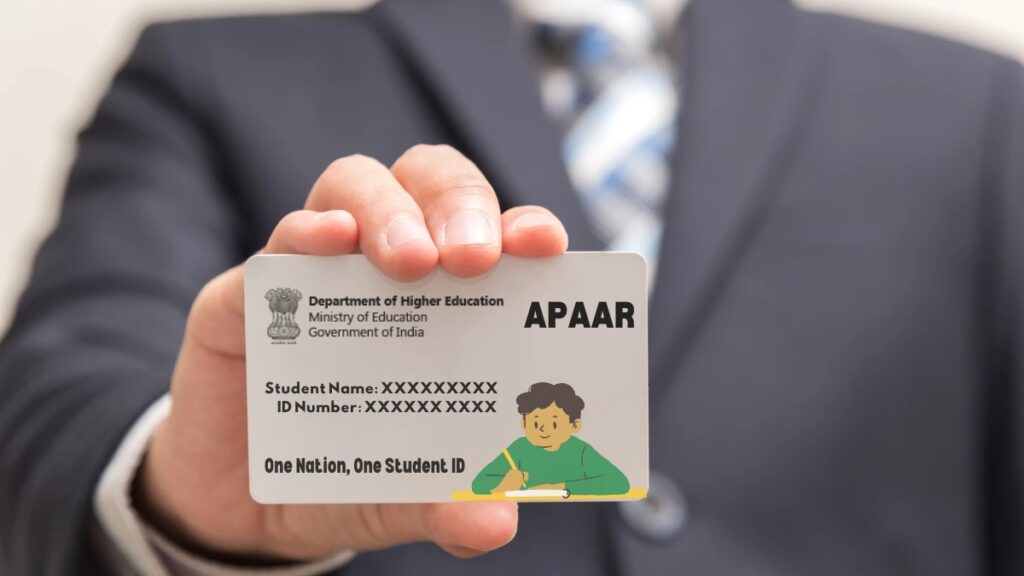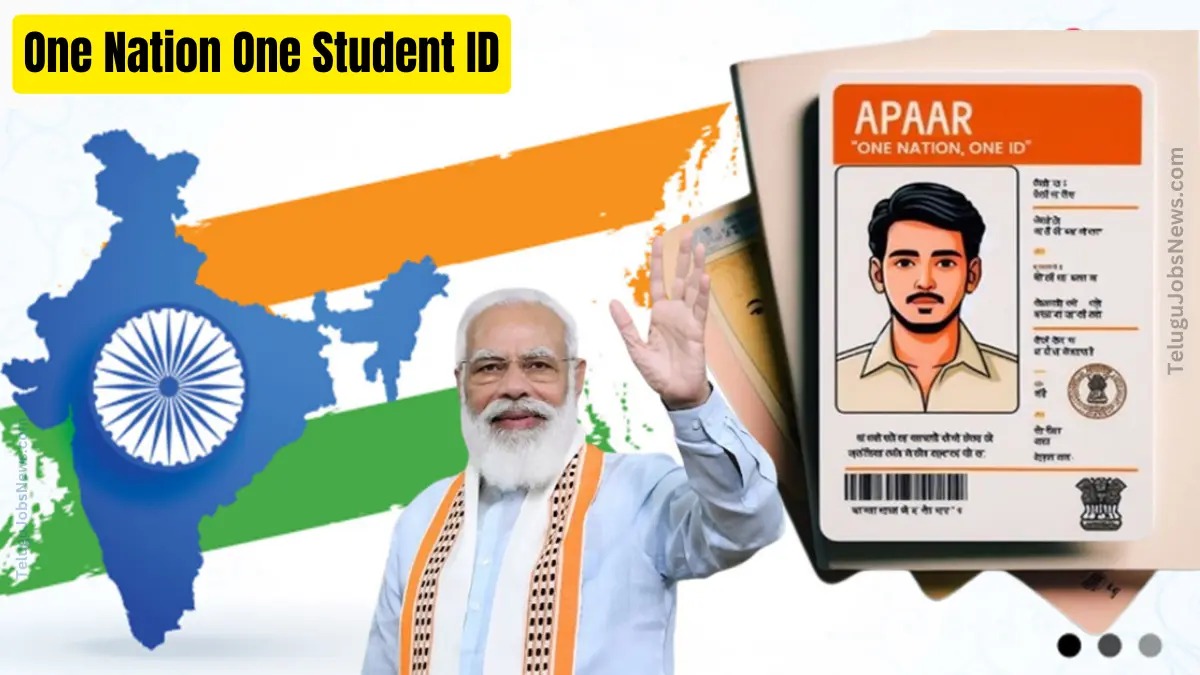The Government of India is launching a unique lifetime identity system called One Nation One Student ID for all school and college students in the country. It will provide every student an ID number similar to how Aadhaar card provides Indian residents a unique identity.
What is One Nation One Student ID?
The One Nation One Student ID project was created under India’s new National Education Policy 2020. The goal is to give every student a special identity number called the APAAR ID.
APAAR stands for Automatic Permanent Academic Account Registry. As the name suggests, the APAAR ID will digitally track and record a student’s entire academic journey from school to college. It will link all their educational credentials like achievements, certificates, credits etc. to one single unique number.
This APAAR ID will remain the same for every student regardless of how many different schools, colleges or universities they enroll in over their student lifetime. So it will provide them with a portable unified identity seamlessly connecting their academic records across different educational institutions.
How will the Student APAAR ID system work?
The APAAR ID system is intended to work very similarly to how Aadhaar works as a unique identity for Indian citizens.
When a student first gets admission in any school or higher education institution, they will be registered on a central government portal called Unified District Information System for Education Plus (UDISE+). This portal will automatically generate a random 14-15 digit APAAR ID number exclusive to each student.
The student’s personal details like name, date of birth, contact information etc. along with this APAAR ID will be stored securely in digital lockers managed by the government.
Schools and colleges will then update this system by linking the student’s educational records like enrolment status, achievements, skill certificates and course credits to their APAAR ID as they progress year after year.
Students can access all the information mapped to their APAAR ID anytime through an online locker provided to them.
This means they will not have to physically carry around paper documents as proof when applying to institutes or transferring between different colleges.
Educational administrators can also digitally verify and retrieve student data rapidly through the ID for processes like admissions, credit transfers, benefit schemes etc.
However, explicit student consent will still be mandatory before sharing any personal information with third parties beyond the educational ecosystem.

Why is the Student ID system being launched by the Government now?
The One Nation One Student ID system through universal APAAR IDs primarily aims to:
- Provide each student a single recognized identity number valid for life across schools, colleges and universities
- Digitally capture students’ educational data and maintain continuity in tracking their academic progress as they move institutions
- Make academic records portable through secure lifetime digital lockers accessible anytime
- Build a unified national-level database covering all school and college students
This will help modernize India’s highly fragmented education system into an integrated digital ecosystem as envisioned in the National Education Policy 2020 by streamlining data management.
What are some benefits students will get from their APAAR IDs?
With all academic certificates, achievements and credits linked to one lifetime student ID, some major benefits include:
Hassle-free Identity Lifelong
Students need not carry paper documents repeatedly as identity proof when changing institutions
Accessible Digital Locker
Their updated academic records, skill certificates can be accessed easily anytime for verification
Holistic Credit Tracking
Their extracurricular credits gained for hobbies, sports, arts, social service etc. also get tracked along with course credits
Informed Decision Making
Consolidated past records available through ID will help make better decisions on future academic choices
Administrative Ease
Smooth document submission and verification for educational processes like admissions, credit transfers, loans etc. across institutions
So the unique digital ID promises to greatly simplify student life by serving as a portable consolidated academic identity.
How will Indian educational institutions and administrators benefit from this system?
For schools, colleges and related authorities, the APAAR ID system enables:
Unified Student Information
Quick access to verified educational documents or data about students via their universal ID
Data-driven Education Policy Formulation
Centralized dashboard providing comparative nationwide student data to monitor gaps and formulate targeted schemes
Optimized Academic Administrative Procedures
Faster enrolment, attendance marking, performance tracking, assessments, transfers, certifications etc. by accessing latest student progress data through APAAR IDs thereby minimizing document processing
So by streamlining information exchange, universal student IDs are expected to enhance systemic administrative efficiency. This will help authorities focus better on improving actual learning experiences.
What measures are being incorporated for student data privacy protection?
Since the APAAR ID system seeks to digitally capture students’ educational journey over decades, naturally concerns exist regarding privacy of personal data. Some critical safeguards in use include:
Mandatory Initial Consent
Parental/guardian consent compulsory before ID generation for any minor school student
Controlled Information Sharing
Students can enable select permissions for academic record sharing beyond institutes
Restricted Locker Access
Highly controlled third party verification access only to individuals’ digital academic data lockers
Consent Revocation Provision
Option to deactivate APAAR ID by revoking consent thereby discontinuing tracking
Anonymized & Aggregate Data Usage
Only de-identified or aggregate level reporting of performance indicators and statistics for policy improvement
So parents and students themselves will be empowered to control their academic data sharing to prevent misuse of private information.
What is the short term and long term vision for this One Nation One Student ID system?
State-wise Rollout Plan
The first phase involves gradually initiating the APAAR ID drive state-wise across India for all school students coming under the different School Education Department authorities
Inclusion of Higher Education
In the second phase, the ID coverage will be expanded to map students admitted into colleges and universities also thereby covering the entire student lifecycle
National Student Registry
Ultimately, One Nation One Student ID system aims to morph into a comprehensive National Student Registry (NSR)
The NSR will integrate currently fragmented higher education platforms to enable seamless flow of student data across institutions, academic banks and verification systems.
Over the long term, mapping of Academic Bank of Credits programme data alongwith skills and unique student IDs nationally is expected to hugely transform data management. It promises to strengthen cooperation in Indian education.
What are some challenges expected during the student ID system implementation?
While this data-driven student ID system offers immense advantages, ensuring seamless adoption nationally itself involves addressing many complex challenges like:
Centre-State Governance Coordination Issues
Need alignment across diverse central and state education bodies, each with specialized focus areas, to execute unified structure
Digital Readiness Gaps
Many educational institutions still lack IT infrastructure or expertise for capturing real-time digital data fully compatible with standardized data systems
Data Security Concerns
Student academic data captured over decades makes confidentiality and preventing exposure or leaks absolutely paramount
Legal Compliance Requirements
Dynamic legal requirements around data protection laws, cybersecurity standards and student privacy norms require periodic evaluation
Cultural Adoption Barriers
General lack of technology familiarity may inhibit voluntary self-registration
Overcoming these roadblocks will need substantial investments coupled with skill building of stakeholders to secure collaborative support critical for addressing adoption challenges.


